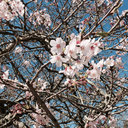Argentilactone Molecular Targets in Paracoccidioides brasiliensis Identified by Chemoproteomics.
Raktažodžiai
Santrauka
Paracoccidioidomycosis (PCM) is the cause of many deaths from systemic mycoses. The etiological agents of PCM belong to the Paracoccidioides genus, which is restricted to Latin America. The infection is acquired through the inhalation of conidia that primarily lodge in the lungs and may disseminate to other organs and tissues. The treatment for PCM is commonly performed via the administration of antifungals such as amphotericin B, co-trimoxazole, and itraconazole. The antifungal toxicity and side effects, in addition to their long treatment times, have stimulated research for new bioactive compounds. Argentilactone is a compound that was isolated from the Brazilian savanna plant Hyptis ovalifolia, and it has been suggested to be a potent antifungal, inhibiting the dimorphism of P. brasiliensis and the enzymatic activity of isocitrate lyase, a key enzyme of the glyoxylate cycle. This work was developed due to the importance of elucidating the putative mode of action of argentilactone. The chemoproteomics approach via affinity chromatography was the methodology used to explore the interactions between P. brasiliensis proteins and argentilactone. A total of 109 proteins were identified and classified functionally. The most representative functional categories were related to amino acid metabolism, energy, and detoxification. Argentilactone inhibited the enzymatic activity of malate dehydrogenase, citrate synthase, and pyruvate dehydrogenase. Furthermore, argentilactone induces the production of reactive oxygen species and inhibits the biosynthesis of cell wall polymers.


